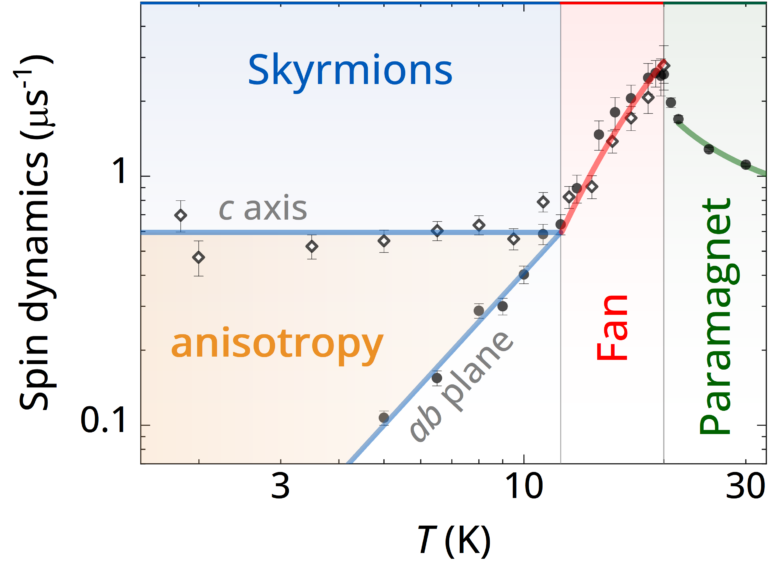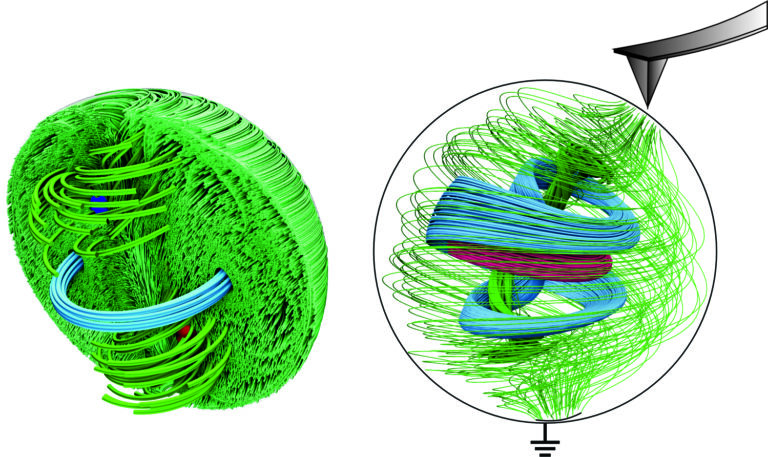Other news

Anisotropic Skyrmion and Multi-q Spin Dynamics in Centrosymmetric Gd2PdSi3
Matjaž Gomilšek from the Condensed Matter Physics Department at the Jožef Stefan Institute and the Faculty of Mathematics and Physics, University of Ljubljana has published a paper Anisotropic Skyrmion and Multi-q Spin Dynamics in Centrosymmetric Gd2PdSi3 in Physical Review Letters as the leading author, together with co-authors from the UK, Switzerland, Germany, Canada, and Japan. In the paper they discover a pronounced directional dependence of magnetic dynamics in topologically-protected whirls of magnetization called skyrmions. The observed behavior is very unusual, since the studied material is highly symmetrical. The researchers also discover a strong directional dependence of magnetic dynamics in the previously-unidentified ground state of the material, which suggests that it is the much-sought-after lattice of merons (“halves” of a skyrmion). These discoveries significantly contribute to solving the puzzle of the stability of topological magnetic textures in highly symmetrical materials.
Skyrmions can be used for data storage, spintronics (a magnetic analogue of electronics), or as a platform for advanced (reservoir-computing) artificial intelligence.

Topological foundations of ferroelectricity
An international team of scientists published a new review article titled "Topological foundations of ferroelectricity" in the journal Physics Reports (Impact Factor: 23.9). The article explores the fundamental role of topology in ferroelectric materials. Researcher Dr. Anna Razumnaya from Jozef Stefan Institute, in collaboration with researchers from the University of Picardie, IFW Dresden, the University of Toronto, and Terra Quantum AG, provided a groundbreaking framework for understanding and classifying complex polarization structures in nanostructured ferroelectrics, paving the way for future technological applications. Ferroelectric materials have long been studied for their unique electrical properties and applications in memory devices, sensors, and energy-efficient electronics. Recent discoveries have revealed that these materials can host a variety of exotic topological states, including vortices, skyrmions, and Hopfions. By drawing parallels between hydrodynamics and electrostatics, the study introduces a comprehensive classification of these topological states and their impact on the behavior of ferroelectrics.
This research demonstrates how fundamental topological concepts, such as helicity, fibration, and ergodicity, can be applied to ferroelectric materials to better understand and manipulate their polarization structures. This work expands the theoretical foundations of ferroelectricity and opens new avenues for the design of next-generation functional materials. By bridging topology with condensed matter physics, this study opens new prospects for the development of polar materials, including traditional ferroelectrics and newly discovered soft ferroelectric materials, while also advancing the frontiers of their potential applications in cutting-edge electronic devices.
